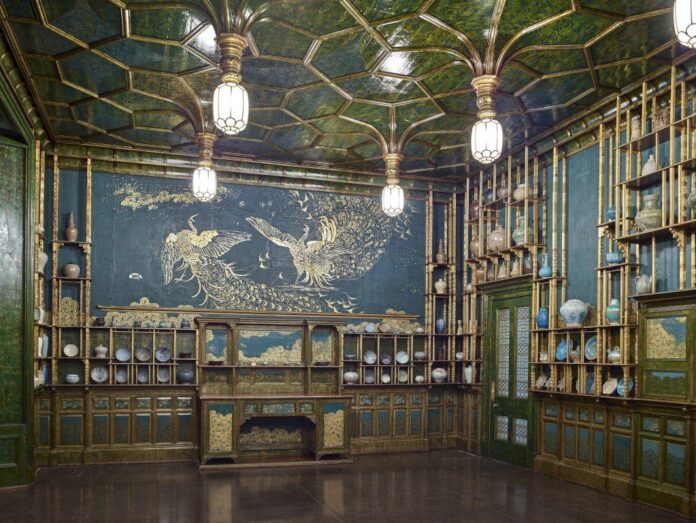The Smithsonian’s National Museum of Asian Art first opened its doors in 1923—comprised of the Freer Gallery of Art and Arthur M. Sackler Gallery—and has become a bastion of preserving, exhibiting, and interpreting Asian art, with an over 40,000 object collection dating from the Neolithic period through today. Marking the century since its founding, the museum has organized a dynamic year-long centennial celebration, featuring special exhibitions, new permanent exhibitions, refurbishment of existing galleries, and an extensive schedule of programming—including music series, events, and more. It is an unparalleled scale of celebration with a mission, as the museum plans to leverage this centennial “as a catalyst for its transformative vision for the century ahead: to become a leading national and global resource for understanding Asian art and societies, and their intersection with America.”

Installation view of “Ay-Ō’s Happy Rainbow Hell.” Courtesy of Smithsonian’s National Museum of Asian Art, Washington, D.C.
Facilitating this new and expanded vision for the museum and its future is the introduction of four new or reinstalled permanent galleries. The first of these is a new introductory hall featuring “Connecting Stories,” opening April 29, 2023, which will both welcome visitors and provide tools and context for better understanding and engagement. This summer, the museum’s first modern and contemporary gallery will open with four video-based exhibitions, and this autumn “Freer’s Global Network: Artists, Collectors, and Dealers” will be unveiled, an exhibition that will examine the origins and influences that have shaped the museum’s collection.

Installation view of five Chinese bronzes (Shang Dynasty, ca. 1600–1050 B.C.E) in “Anyang: China’s Ancient City of Kings.” Courtesy of Smithsonian’s National Museum of Asian Art, Washington, D.C.
Operating as cornerstones of the centennial celebrations are three lead temporary exhibitions, which opened between late 2022 and earlier this year. “A Splendid Land: Paintings from Royal Udaipur,” on view through May 14, 2023, is a major survey comprised of works from the city of Udaipur in Rajasthan, India. Open through April of next year, “Anyang: China’s Ancienty City of Kings” brings to light more than 200 objects from the museum’s collection tracing the artistic achievements of China’s Shang dynasty—the first exhibition of its kind in the United States. Highlighting contemporary Japanese artist Ay-Ō (b. 1931), “Ay-Ō’s Happy Rainbow Hell” is the artist’s first museum exhibition in the United States, and highlights his radical and experimental practice.

Installation view of “A Splendid Land: Paintings from Royal Udaipur.” Courtesy of Smithsonian’s National Museum of Asian Art, Washington, D.C.
Coinciding with the start of Asian American and Pacific Islander Heritage Month, the museum will host its first large-scale festival. The two-week festival, May 1–13, 2023, is a foundational element of the centennial celebrations, taking place within the museum and the surrounding National Mall. Featuring keynote speakers, culinary events, and interactive experiences, there is also an exciting roster of headline musical performers, such as K-pop star Eric Nam and R&B artist Raveena. Other main stage performers include Kennedy Center resident and violinist Jennifer Koh as well as Spilling Ink, the latter of which will present dances that blend contemporary and classical arts of India in and around the museum over the course of the festival.

Spilling Ink. Courtesy of Smithsonian’s National Museum of Asian Art, Washington, D.C.
The events and exhibitions within the heritage month festival as well as the overarching centennial celebrations are incredibly diverse and wide ranging (see the museum’s event page here) and offer an incredible opportunity for people of all ages to discover and learn more about the museum as well as Asian art spanning a range of cultures and across time. With the festival just around the corner, and centennial celebration events beyond, the Smithsonian’s National Museum of Asian Art is situated to continue being one of the foremost destinations and resources for Asian art and culture.

























